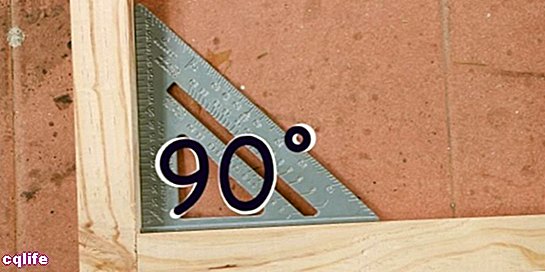We explain what a right angle is in geometry, its characteristics and examples from everyday life. Also, other types of angles.

What is a right angle?
In geometry, it is common for angles are classified according to their opening or closure. In this sense, right angles are those that measure exactly 90 ° sexagesimal (or expressed in other units: 𝛑 / 2 radians, or 100g centesimals). This means that its two sides are two perpendicular rays, whose meeting point makes up the angle.
Right angles are very easy to recognize, since their degree of opening is fixed and stable, and can be found in numerous geometric figures, such as squares, rectangles or triangles rectangles.
Characteristics of right angles
Right angles are characterized by the following:
- They have an opening degree of exactly 90 °. This is equivalent to the angle formed at their meeting point by two rays perpendicular to each other.
- The vertex of the angle is at the exact point where the two rays intersect (that is, where their sides meet).
- The orthogonal projection of one onto the other is a point coinciding with the vertex.
Examples of right angles
The corners of soccer fields form right angles.Examples of right angles abound, such as:
- The angle formed by the corners of our room, that is, the meeting point between two straight and perpendicular walls.
- The angle that a straight column forms with respect to the floor, that is, it does not have any degree of inclination.
- The angle formed by the corners of any book.
- The angle formed by the corners of a football, tennis, or ping-pong table.
- The angle at any of the corners of a square.
Types of angles
Just as there are right angles, we can also mention four other possible classifications of angles:
- Null angles, those whose two sides coincide, forming an angle of 0 ° or nonexistent.
- Obtuse angles, those whose opening is greater than 90 ° sexagesimal (that is, more open than a right angle).
- Acute angles, those whose opening is less than 90 ° sexagersimal (that is, less open than a right angle).
- Flat angles, those whose sides are two consecutive lines, which meet at the vertex, and therefore form an aperture of 180 ° sexagesimal.
